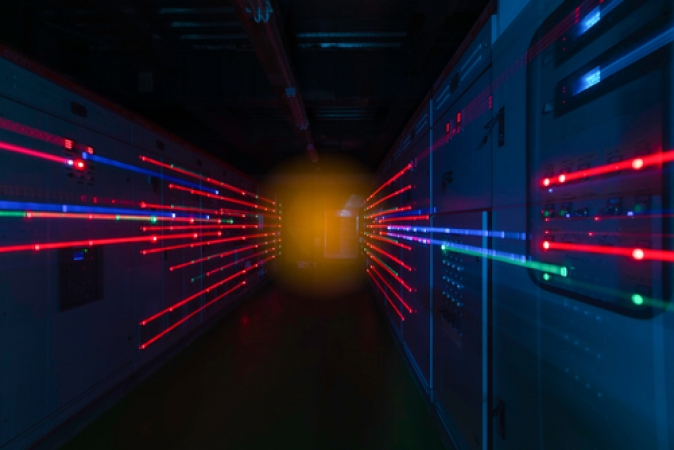
There’s breaking news in the world of electrical system safety! When the 2023 National Electrical Code® (also known as the NEC or NFPA 70®) is released in Fall 2022, it will include Article 726 for the first time. This addition introduces new Class 4 power circuits: an improved format of electricity.
To understand how Class 4 power is different—and the impact it will have—it helps to first understand the three existing power circuit classes. Let’s take a closer look at each one.
What Are Power Circuit Classes?
To make a clear distinction between wiring for “ordinary” circuits and specialized circuits with limited power and/or voltage, the NEC classifies circuits based on their electrical usage and how they should be applied.
Until recently, there were three classes for power-limited circuits. In 2022, however, a fourth circuit type will be introduced into the NEC.
According to Stephen Eaves, the CEO and founder at VoltServer, the creator of Digital Electricity™—a Class 4 power system—it’s easiest to think about the classes being organized based on fire safety and human safety.
Class 1 (CL1) Circuits
The NEC divides Class 1 circuits into two categories:
- Remote-control/signaling circuits
- Power-limited circuits
Remote-control and signaling circuits shall not exceed 600V; power-limited circuits operate at no more than 30V and 1,000VA with limited source output. Power-limited circuits also restrict the amount of supply current on the circuit in the event of a ground fault, short circuit or overload.
“Class 1 power is relatively safe from the standpoint of electrical shock,” explains Eaves, “but it has limits on power. Class 1 is not considered an acceptable safety risk in terms of fire. If it’s run through a wall, then it must be contained in conduit, for example, in commercial installations.”
You typically find Class 1 circuits in environments where motors and compressors are in use.
Class 2 (CL2) Circuits
These circuits can support lower power (up to 100VA) in many types of environments. A Class 2 circuit considers safety from a fire initiation standpoint and provides acceptable protections from electric shock. Applications include audio systems, low-voltage lighting systems, security systems, thermostats and PLCs.
Class 2 power loads are often delivered through Power over Ethernet (PoE) cables, which combine power and data in a single cable run to save valuable installation time.
Class 3 (CL3) Power Circuits
Class 3 circuits function similarly to Class 2 circuits, but with higher voltage and power limitations. They also support low-energy, low-voltage applications, but Class 3 circuits aren’t as common as Class 2 circuits.
“Class 3 is like Class 2 only at higher voltages,” says Eaves. They’re occasionally used to power equipment that requires more power than what Class 2 can safely provide. This can include certain types of nurse call systems, commercial public address systems and commercial intercom systems, for example.
Similar to Class 2, Class 3 power loads are often delivered through data cables.
NEW: Class 4 (CL4) Power Circuits
With voltage ratings of up to 450V, Class 4 circuits bring a new type of circuit to the NEC.
“When everyone took a look at these types of systems, which are called fault-managed power systems, they realized it was unique, different, and specialized enough to form a specific code section around it,” describes Eaves. “The Pulse Energy Transfer Group—a task group within the NEC—was formed to provide recommendations to Code-Making Panels to create Class 4.”
Class 4 circuits provide the convenience and safety of low-voltage power, just like PoE; however, Class 4 also offers close to 20 times the power of PoE across hundreds of meters, offering a safe alternative to AC power.
Similar to Class 2 and Class 3, Class 4 power loads are often delivered through technology that combines power and data in a single cable run.
The First UL-Certified Class 4 Cabling
We’re excited to announce that Belden is the first to offer a UL-certified Class 4 cable. Our Digital Electricity Cables allow you to take advantage of DE to safely deliver significant power across long distances using smaller conductors.
To ensure they can support many types of applications, DE Cables were designed in conjunction with VoltServer, the creator of Digital Electricity. They’re available in copper-only and hybrid copper/fiber constructions to transmit power and data over long distances in a single cable run.
Similar to PoE, DE Cables can be installed by the same low-voltage integrators that install Category cabling, and within the same pathways.
Learn more about Class 4 power and our UL-certified DE Cables.
About the Author
Ron Tellas, Technology and Applications Manager
Ron joined Belden in 2016 to help define the roadmap of technology and applications in enterprise. Prior to this, he developed cables and connectivity for Panduit and Andrew Corp. Ron Tellas is a subject-matter expert in RF design and Electromagnetic Propagation. As a Technology and Applications Manager, Ron focuses on Local Area Networking. He represents Belden in the ISO WG3 committee, TIA TR42 Premises Cabling Standards, IEEE 802.3 Ethernet Working Group and served as a committee member of NFPA 70 Code-Making Panel 3.
Ron is the inventor of 16 US patents. He has a Bachelor of Science degree in Electrical Engineering from Purdue University, a Master of Science degree in Electrical Engineering from Illinois Institute of Technology, and a Master of Business Administration from Purdue University.
